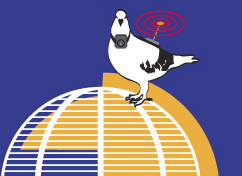|
Transvergence artworks
|
|
Written by Administrator
|
|
Feb 07, 2006 at 05:49 AM |
|
Apocrypha
is a satirical work that posits a colony of prehistorical
archaebacteria as an “oracle” able to divine answers to questions
posed by “disciples” who contact the archaebacteria by web and on site
access. A receipt is issued upon completion of the transaction,
providing physical evidence of the deific exchange and a cryptic
prophecy for disciples to ponder.
The stimuli of text or voice message from
visitors to the exhibition via computer input elicits a chemical
response from a colony of archaebacteria. This response is translated
into text that the supplicant (or gallery visitor) is able to
interpret and apply to everyday life. The archaebacteria response is
actually a physical alteration that can be read as one of a series of
numbers. These numbers are mapped using code-breaking principles of
repetition and predicability onto corresponding lines of an ancient
text to create an apparently meaningful response to the problem posed.
The text utilised as the source of wisdom is the Apocrypha (an
ancient collection of sacred texts excluded from the canonised version
of the Bible). Originally, apocryphal writing was considered to be a
text of sacred origin, designated to be hidden until the due time of
its revelation.
Apocrypha utilises the research and mapping of the
protein codes of ancient bacteria (archaebacteria) undertaken by TIGR
(The Institute for Genomic Research) www.tigr.org in Maryland, USA and
the Sanger Centre in Cambridge, UK over the past decade. Simply, this
research extends the traditional sense of the “family tree” beyond now
acknowledged relationships within the animal kingdom to include the
vast, numerous genera of bacteria that precede and coexist with Homo
Sapien.
New discoveries of ancient archeabacteria - the earliest life forms
on the planet – continue to take place, deep in the core of the earth
or embedded in ancient glaciers, for example. It is these life forms
scientists hope to discover with interstellar probes. Interestingly,
incarnations of these ancient archaebacteria also appear in our own
cells as mitochondria, symbiotic energy-producing slaves to the
nucleus that give us human form, and part of the continuing chain that
links us to life’s earliest origins.
|
|
Last Updated ( Jul 15, 2008 at 06:45 PM )
|
